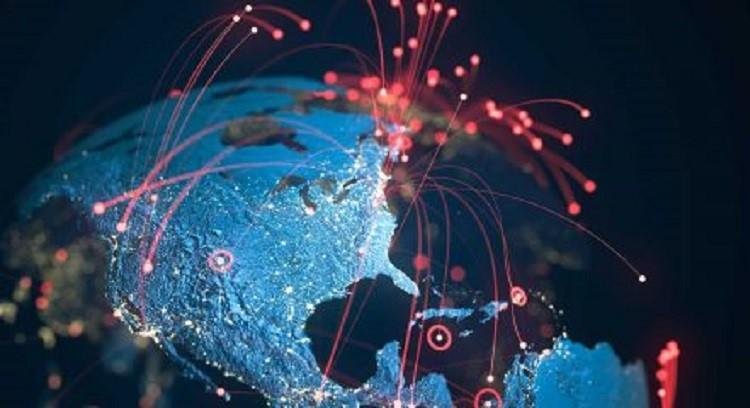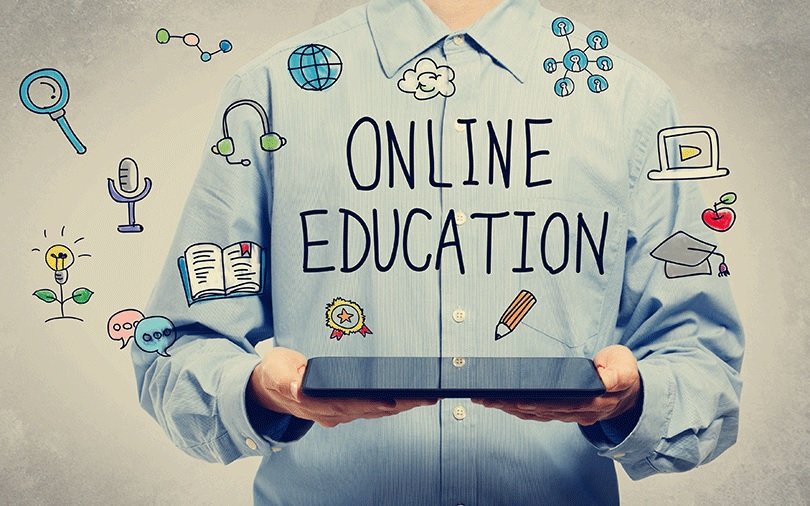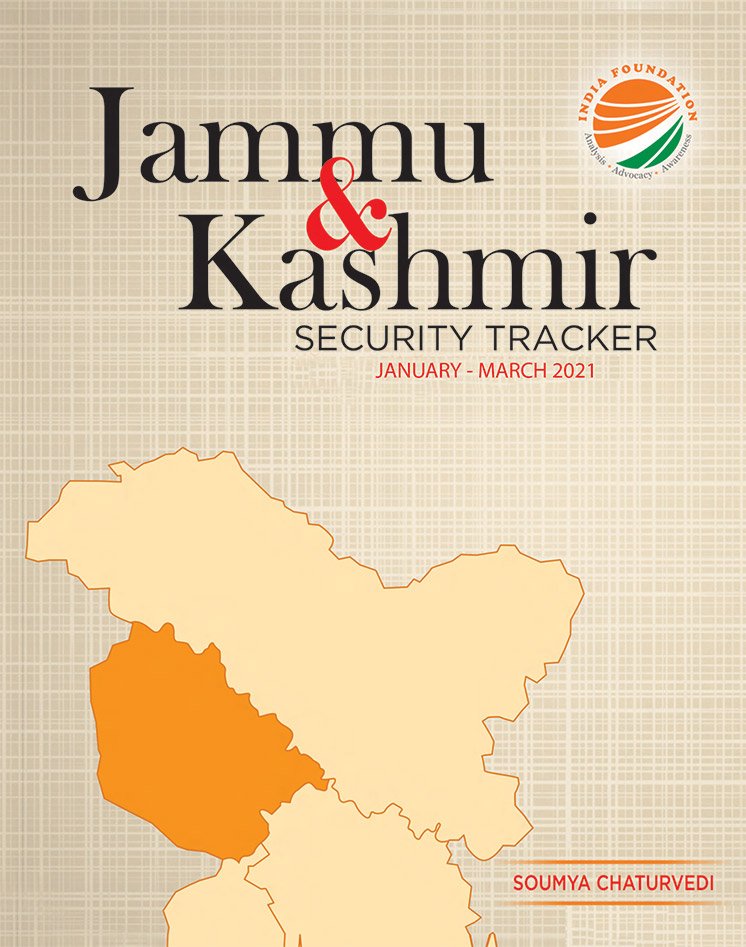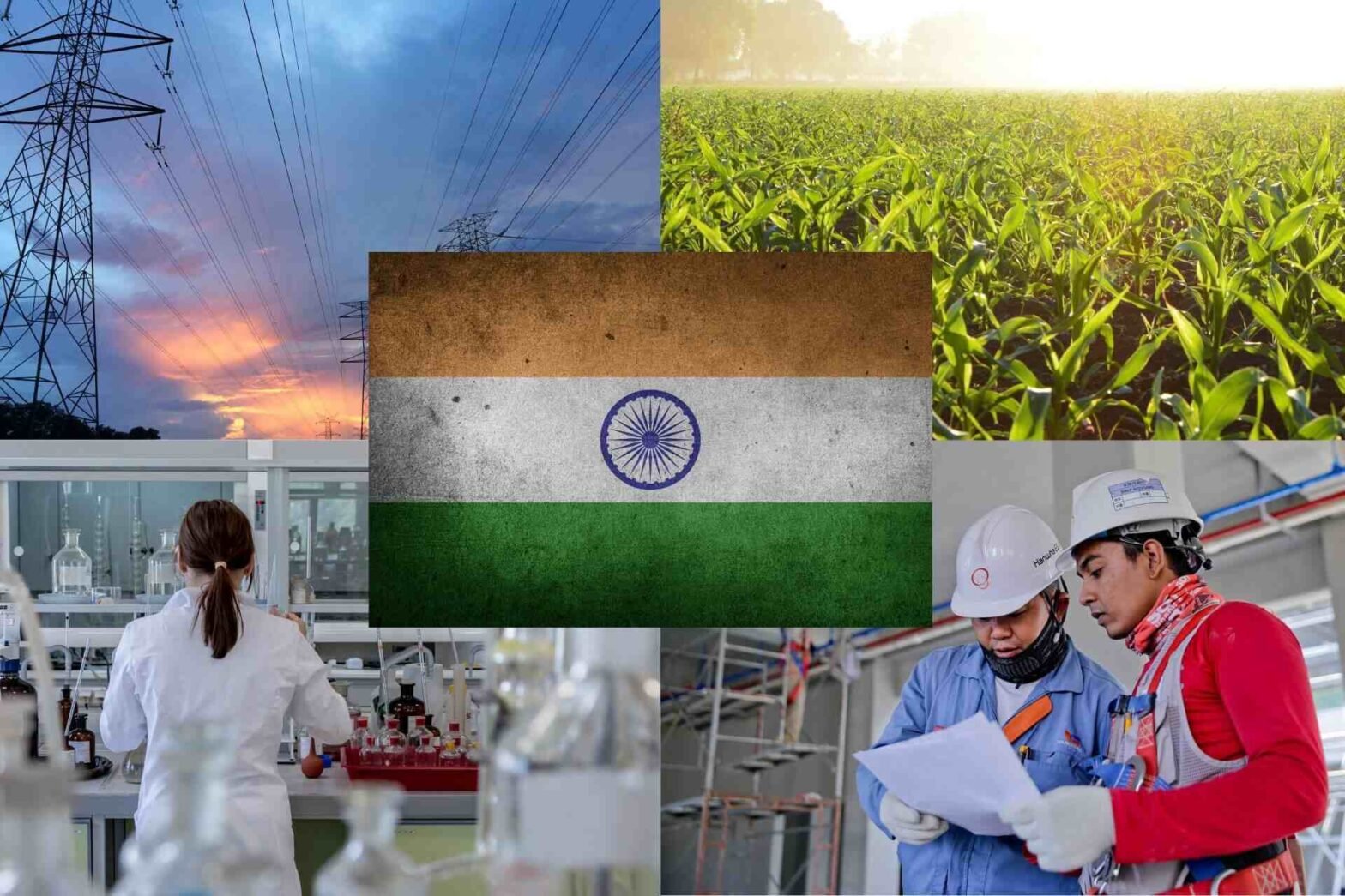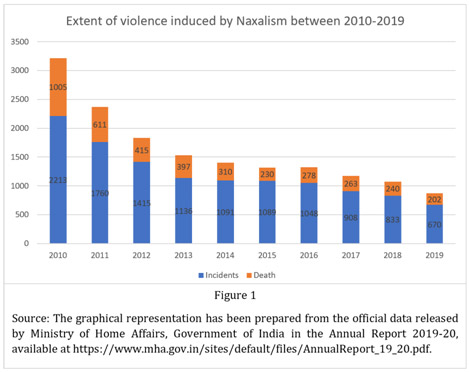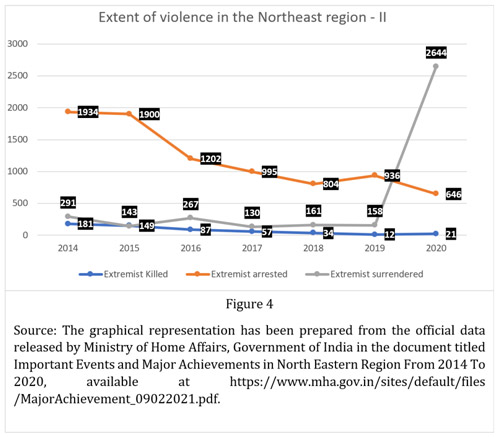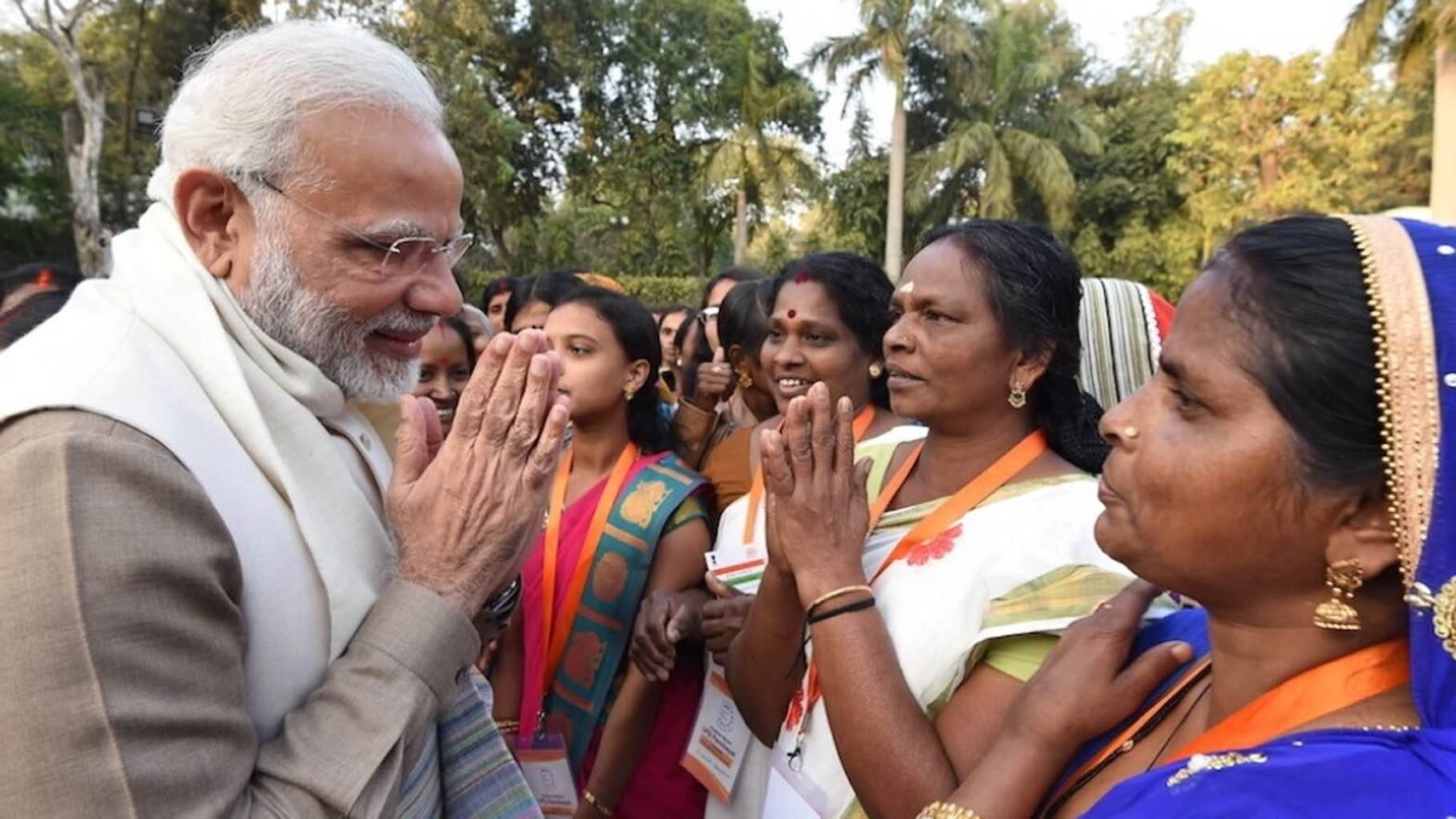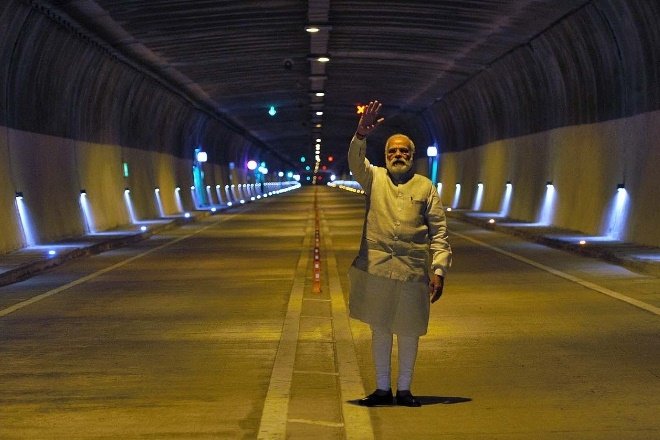Gauri Dwivedi (GD): This conversation comes in at a time when the Modi government would be celebrating its second year in its second term. I know it’s a somber moment and there won’t be any celebrations, so to say, but Mr Prabhu, I think it will be a good time to do a lot of introspection for the government as well.Two years into its second term, almost halfway there,what are some of the big milestones or achievements in your assessment. First, economically, as a technocrat, what is your assessment in terms of how the government’s report card has been in the last two years.
Suresh Prabhu (SP): Thank you very much for this opportunity.As you know,these last two years have been marked by unprecedented challenges for any government, in most parts of the world. It’s not all.Because, more or less as the we began 2020, we had Corona. Infact, it started towards the end of 2019 and that is why it is called COVID-19, because it actually started in 2019. So, in a way coinciding with the beginning of this Government, not necessarily at that time but a few months later. As a result of that, you have seen a huge slowing down of global economy. There was a huge contraction, not just slowing down but contraction.
Biggest economy US has contracted significantly. Japan has always been a slowing economy for last two decades, but again it contracted. China, did not contract much but it is the second largest also. The European Union, the biggest block after US again had a very negative impact of 2020. As a result of that, there was also impact on the Indian Economy. As compared to 1991, when our total influence on global economy was not as large as it is today.In the last 30 years economy has more integrated with the global economy, whether it is on the demand side where it affects your domestic as well as international trade. Or, whether even from supply side with a lot of disruptions in supplies, because India is also part of a global supply chain. So, in both ways India in away was affected. So, you have to put that in perspective that it was a very difficult period for any government in the world and not only for India.
Of course, my few weeks have been, again, even more challenging, because the second wave has seriously impacted socio-economic life besides health, which is a very major challenge for any government to deal with. And when it happens, an unprecedented crisis of this magnitude happens the resources get diverted to fire-fighting than in building durable infrastructure.
So, you can see that last few months have been diverted to fighting pandemic. Therefore, you have to whether it is giving free food to the migrant which is absolutely necessary, or which is providing support to small and medium enterprises. So, all of these are enabling fiscal measures, and even to some extent, expansion of monetary policy to ensure that we actually create enough monetary resources available to the economy.
All of that, I would not call it a normal course of time, so when evaluating the last two years’ performance of the government, it must be seen in that context.When seen in that perspective it will stand out to be one of the most difficult and challenging periods for any government in the world. So, therefore, I think this has to be balanced and looked at in that perspective so I think it’s a very difficult time. But I would say that the government is managing it with a lot of strength.
GD: Given the fluidity of the situation right now, do you think that economic decisions can’t be cast in stone. Because, when the budget was to be presented, we said at the beginning of this year that we’re going to nowfollow a certain process as far as our economic decisions are concerned, we’d continue with that. Do you think it’s time to do course correction?Because you’re right that it’s such a fluid situation, globally the impact has been so severe because of COVID that to prepare ourselves for the next challenge, or to be in time for the next anniversary of the government next year, what do you think would be the two or three top decisions or top issues that need to be dealt with economically for India to be far more resilient.
SP: If you look at it, obviously, the fundamental objective behind any economic policy should be to accelerate the growth rate. That is very important. But we bring in more dynamism to Indian economy so one is to make it grow faster, you have to make it more competitive. If the economy is not competitive, it will never be able to succeed in global markets. And I was saying earlier, that because of our integration with the global market, India’s economic global market is even far more than before. Now we also want to increase the share of India’s global trade and if we are not competitive, we will not be able to do that.
And you cannot become competitive globally unless you are competitive back home. So, making India competitive in all spheres of economic activity has to be a primary goal. And to do that, competitive does not necessary mean only being in competition, but also making Indian industry less regulated. Doing away with unnecessary and non-productive regulations.
The second part would be that if you look at the current economic model of most of the fast-growing economies who have succeeded in the last five decades, you will notice that Each one of them succeeded because they kept capturing share of global market more and more and could expand their footprint globallyeven more.So, as I was saying competitive, but to increase your global footprint you need strategy.
I am just telling so that you asked me what’s the roadmap so the roadmap was prepared. As a Commerce Industry Minister, I had set up a group under the chairmanship of Sujit Bhalla, who is currently India’s representative to the International Monetary Fund. Today’s Foreign Minister, who was at that time working for the Tata’s, Dr Jaishankar was a member of this. Former Commerce Secretary Shri Rajiv Kher; the Chairman of Quality Control of India and the former partner of McKinsey, the chairman of McKinseywere all made members.
I had prepared a roadmap on what is that we need to do to increase India’s market share, globally. And I am reiterating that if you don’t have a bigger market share, your economic growth back home will be affected. All economies which have succeeded in the last few decades, have done this very aggressively. So that’s the second thing that we need to work on.
Thirdly, part of that, is that if you look at each of thesegment of India’s economy, whether it is manufacturing industry, services,or agriculture, each one of them will have to contribute.So, unless all the three cylinders are put on fire, atthe same time, we will not be able to do that. So, for industry, competitiveness is one part of also ensuring, and then again that’s also the extension of the competition as I said, increasing your share globally. We had prepared a roadmap of $5 Trillion economy to increase industry’s share which is currently 16% of GDP to 20%. So, making it a trillion-dollar contribution from industry to the entire economy.
And I had people compete each and every segment on what will contribute in $1 trillion. It is easy to say 20% Easy to say 1 trillion, but you must then now break it out, how much it will come from. Say for example, contribution from steel, or cement or something else, and to make sure that you get that then again you have to break it down further and find out whether house steel or cement, what are the sectoral problem that we’re facing. How will you remove them?So, this was prepared by me in consultation with CII, because as industry body. And again, not only CII because CII can do it as an academic exercise, we had got hands on people. Not only Anand Mahindra from Mahindra and Mahindra but also Pawan Goenka because he is the hands-on man for the automobile sector.Incidentally automobile is the largest component of India’s manufacturing.In fact, under the old series of GDP, 49% of manufacturers used to come only from automobile sector.
So, that one, and services, we identified 12 champion sectors or services, and said that these are the 12 champion sectors which has a potential to grow. And then agriculture, many measures are required and Prime Minister Modi has taken a number of measures, but one of them will be India’s increasing Agri exports.The potential for Agriexports is 100 million USD. When we say Agri-exports it means food is agriculture, horticulture, dairy, marine products and meat, all put together. Interestingly, that when you are going to increase your agriculture export your foreign buyers are not going to buy your agricultural products unless they are quality products. So, you’re actually by exporting agriculture products or integrating quality into your domestic food production.
GD: I have to ask you what happened to that plan?
SP: Actually, it was made almost three years ago. So, I got it I got it processed when I was a minister and those were the final days of Modi 1 government. I don’t know what is the present status but this complete roadmap is ready.
GD: Let me then ask you, there are some specifics around the economic part that I would have come back to. Because you mentioned Mr Jaishankar, because there are so many global headwinds as far as economics and geopolitical equations coming together. How do you see India’s role going forward in terms of the largest sentiment, the world has about decoupling?Nobody can wish China away, it’s too big a country economically to wish, we don’t want it either. But this sentiment to reduce the excessive dependence economically on China, has that translated into India’s economic gains, and how do you see that in the future as well.
SP: The world has evolved into very interesting economic interdependence.Now if you look at four decades ago, no country was dependent on another country as much as it is dependent today.
If you look at it, currently what a challenge that we’re facing that we are the biggest manufacturer of vaccine, still we need some ingredient which will be coming from some other part of the world.So, that economic interdependence, has become the hallmark of today’s world economy.When you talk about decoupling, it means whether this entire ecosystem that has been developed, globally, should be reinvented or re looked into, that is the question.
But in that context.We must have a medium term and a long-term plan, but also short-term action plan. Medium term plan could be that to an extent the critical part of your own supply chains, you should have a supply chain security like we talk about energy security. We try to secure your energy resources in a way that no disruption can ever be caused and that is a strategic reserve. The US that is now becoming the largest producer of Oil and Gas both has strategic reserves. Thanks to shale gas, the US has now become a net exporter of oil and gas.
Actually, it has completely changed the dimension. Still, they have s strategic reserve, we too have it. So, from that context, I think we should think about a strategic relook into our supply chains. This is very important.
I will give you an example which is not directly related to India. There are certain rare earth materials which are very important for any industry related to electronics.
And as you know that some of these electronics are now running the world. How do you do E-Commerce? How do you run airlines or banking systems? These are all done using electronic platforms based on some electronic device either hardware or software. Here, software is not necessarily rare earth but based on that.
Now, I don’t want to talk about a country specific so I will not mention. But one country was not giving those rare earths and they thought we will crumble. From that point of view only, we have to look into very seriously, about strategic evaluation of our supply chain. Interdependence is good, for example, why you think when we talk about it, we would like to manufacturemobile phones in India. When you manufacture mobile phones, they cannot be manufactured from A to Z in India. Some parts will have to be imported. We’ll be assembling it finally here, but not necessarily making everything here, which is not even desirable. Even the end manufacturer, under whose name the phone is being sold may also not like an end-to-end manufacturing in one single country. Not because of any strategic reasons but simply economic reasons. So, I am saying, put all together. What you asked me about decoupling is a very important issue. Now I feel China needs to import a lot.
When I was a commerce minister that first year, we reduced the debt deficit for the first time, it was always rising for last 30 years. I got it reduced. I called China’s Commerce Minister here, worked with him, and prepared a strategy. State deficit can be reduced by two ways either by reducing imports or by increasing exports. I worked on both. As exports increased, we talked also of pharmaceuticals.
So, I said you must work with our companies, and allow them to work with regulatory compliance because they’re so good. They’re US FDA approved, European FDA approved and also approved by the Japanese FDA. SO, what could be the regulatory issues. I have not asked you to compromise on health by helping them on regulation, but I’ll tell them so I worked on it.
So decoupling is something which has to happen for sure, but must have a medium-term plan for it, and a long-term perspective. We also must look at it from this angle, that when you are inviting foreign companies to invest in India. We must take them on board, fully, because they will be investing in India for end product may be for domestic market, as well as reaching India’s other strengths, like good cheap labor, with good access of manpower etc etc. for exporting to other countries.So, their export markets also depend upon how they benefit from their presence in India. So, we will have to take them on board first and then deal with this issue.
GD: So mobile manufacturing has definitely been a big star, an outperformer in the overall Indian manufacturing scenario so far.In your assessment which sector could be the next breakthrough for India? We need to identify our core areas of competence in your assessment, what could those be after mobile manufacturing?
SP: That is a very good question.I had prepared a new industrial policy. This was only the third such policy for India. The first was in 1956, that was the Industrial Resolution and not a policy. Then in 1991, at that time the Industry Minister was Narasimha Rao.
Our Fifth Challenge is from this segment of new industries. We have the fifth largest economy even today; we are not a small economy that way. And therefore, when we arethe fifth largest economy, we have already created some industry. We are the sixth or seventh largest industrialized economy in the world also. So, we have large industries not as large as some other countries but still fairly large. So, first challenges that we cannot make it redundant. So, we have to modernize them. Otherwise, what happens to all the investment that has gone into it to implement it is gone into So, the first parts will be modernizing this part of it. So, this is also an important component of a new trust areas. Second part will be investing into the new emerging industries. One of them, and the slide I said when they will no concrete at all on the horizon, life sciences, you know, not pharmaceutical, but a broader sense of life sense will be one of the critical industries which will grow at faster rate. Then we’ll talk about life science, life science is one science, but it’s a convergence of several other important technological frontiers, whether it is, information technology, whether it is blockchain all the new areas that are coming into our blockchain, whether your clinical research. For Life Sciences ultimate leader to do clinical research, clinical trials. So, when you’re doing clinical trials blockchain can come very handy to you.
When you talk about artificial intelligence.This can be used and applied anywhere but artificial intelligence is a very broad science about technology not science, but applied part of it, if you look at it. There are so many segments that can benefit in India particularly agriculture.You can work on it in a very significant way.Like watering a plant,can we not use AI to decide, devise a program with which exactly at the right time, that type of water can be dispensed into the plant.
So, you are asking which industries, the licenses and technology which you call us, emerging technologies, whether they’re blockchain or machine learning or artificial intelligence, or big data, all of that together, can be actually put into Internet of Things, where actually you connect everything in internet together. All these applied parts of them. See we cannot claim to be the originator of this technology and so I get to work on that and we can see I will develop new R&D and develop new patterns everything. Even today we don’t file too many patents in the world.
We are not even in the top five of filing technology patents though we are the fifth largest economy. So there has to be a convergence between R&D and size of the economy. When you are the fifth largest economy, why are you not in the top five of filing the patents and R&Dof new ideas. So, I think that is going to take some time.
GD: No matter how much we verified the Chinese economic model, what needs to sort of also put that out in perspective, that it was in 2010, that their five-year plans said that technology will be the next frontier that we need to conquer. So 11 years later we are sort of still talking about it and it’s important to sort of understand that how the Chinese realized this, more than a decade ago, but then you know let me then ask you this Sir, as we talk about Mr Prabhu that, you know, COVID has wreaked havoc with the Indian economy like it has with the rest of the world, but this was also a year that we were supposed to sort of get back on track, you know, after last year’s horrible economic devastation that happened because of COVID. We were expected to sort of get back on track this year, ADB had announced a lot of others had announced double digit growth expectations.In your assessment,are those still on track, and more importantly, what do you think can be done to try and reduce a cushion, the economic pain that lies ahead, after the second wave.
SP: I think, pre – second wave, one of the thrust areas rightly, put on the table by Prime Minister was infrastructure investment to which I fully agree. In fact, infrastructure has the potential to create many more jobs while it is being built. Because you create infrastructure and therefore, bridge the infrastructure deficit that we are suffering from for a very long time then obviously that will become a launching pad for a new enterprise. And therefore, we’re talking about even competitiveness earlier. So,one of the competitive advantageswe will have over a period of time is that you will have good infrastructure. So, investing into infrastructure is one thing that has to be done very, very quickly to revive India’s economy as well as create medium term plan for India’s increasing share in the global markets.
The second part is that you know, India’s economic all the economies of the world including US, and even Germany or for that matter all major economies of the world, small and medium enterprise, play a key role. Now what is the definition of small medium enterprise in India very different from US, or Germany, but still there are a very important component of economies. So, making SMEs, stronger, more efficient, is very important. Now we talked about pain. I think they are the ones who have suffered extreme pain. And I think that’s why you will need to work on it. I remember something very interesting.In 2008,when we came out with the idea, because the particularly the USA the European said, and they talk in context of Lehman Brothers and others that are too big to fail. Later on, the government has to rescue them. I had said at that time, those are too big to fail, but a small medium enterprise, too small to survive.
So, when they are too big to fail. You try to rescue them. What about a too small to survive element of India’s economy,you must support it. That’s why we have to actually support the small and medium enterprise in a very significant way. And again, if you look at it again why I’m saying this, if you look at the employment profile of the country as well as the world actually. Because we are under condition to the Fourth Industrial Revolution, the economic model of the world is changing. Therefore, the employment profile also changes. So, in that context, if you protect small and medium enterprises, you’re actually creating a safety net for some sections of society, because otherwise if SMEs are not there then those many people will again be seekers of jobs. Those who are creators of jobs today will become seekers.
Here’s the second wavenow and it is very difficult to evaluate the impact on economy, because during the first wave there was a lockdown etc so we know the economic output at contact is significantly different. Now because the impact of second wave is localised and Maharashtra is an important contributor to India’s GDP, we don’t know to what extent will that affect the economy. We will have to evaluate this and based on that evaluation we will have to spread support to the society.
GD: There is this very interesting study that McKinsey did last year about Indian manufacturing, they said that while in the US, on average, firms grown 10 times their size in a 35-year time period, in India, firms grow just twice their size in 35 years. So that explains the whole dwarf concept that exists in in Indian manufacturing that you know we don’t know what to do with them because they’re still not big enough to compete, and they’re still not so small that we sort of you know need to handhold them.And I think that’s really the crux of the Indian manufacturing or the larger problem as far as Indian industry is concerned. But having said that, I want to ask you this as we sort of come to the end of this conversation that Mr Prabhu as weend this, in your hope and assessment, what would be the one big milestone that you would wish the government achieves next year when we have this conversation, and the government is completing another year into its second term, that one big aspiration that you would want to be fulfilled this year.
SP: I think that when onefaces a pressing challenge of this magnitude that occurs once in a lifetime of not just one generation but few generations later, then there are multiple problems that you face in one go. I think one good part of that is that Mr Modi has shown tremendous leadership. He has actually taken this challenge and faced it squarely, so he is facing it head on, though it’s not easy job to do, but he still is doing a fabulous work in terms of facing the challenge, working with people and address this challenge together.
So, in my opinion, that’s a great contribution of Mr Modi during this very troubled time, and I am sure you can see it as you go along, you’ll be able to see that. He’s also working on a very important program which is not probably well appreciated by the people, is providing good quality drinking water to every household of India through pipe water. It was started during this second Modi government. This is called “Ghar Ghar Jal”.It is a very important program.
In Atal Ji’s cabinet, I had six different responsibilities and one of them was, water.And therefore, I dealt with this hands-on business so I know how important this program is. So, this again is a big program that you will see being completed in two-threeyears’ time.
This will be a great thing because if you are giving good quality water, you are actually addressing public health issues. Because two thirds disease in India, minus the pandemic, are waterborne and one-third of the fatalities happen because of waterborne diseases.So, if you’re dealing with water, you are helping that.
Secondly, in rural areas, a girl cannot go to school because you have to go and face the water, a woman of the house has to probably walk some few miles to get a water, so she cannot work in the field. So, if you address a water problem and you have good quality drinking water to every household,we will see higher enrolment of girls for schooling. We will see better enrolment of women into employment and therefore their family incomes will rise. This program will thus have huge benefits. So, I think this is a great contribution of the Narendra Modi Government. It is his personal idea, his flagship program that he has launched, I think these are things a big contribution of Narendra Modi in these last few years.
GD: Thank you so much for speaking to India foundation, I hope that the storm that is upon us quickly passes by India gets vaccinated soon and next year when we have this conversation, we are talking about the high growth trajectory and meeting all those big achievements that right now look a little difficult because of the present scenario that we are living in. Hopefully, which will be short term.Thank you so much for speaking to us.
SP: Thank You.
Brief Bios:
Shri Suresh Prabhakar Prabhu is India’s Sherpa to the G7 and G20.He was formerly the Minister of Railways, Minister of Commerce & Industry and Civil Aviation.
Gaurie Dwivedi is a Senior Journalist covering economy, policy and politics. She is also a Visiting Fellow at USI.

